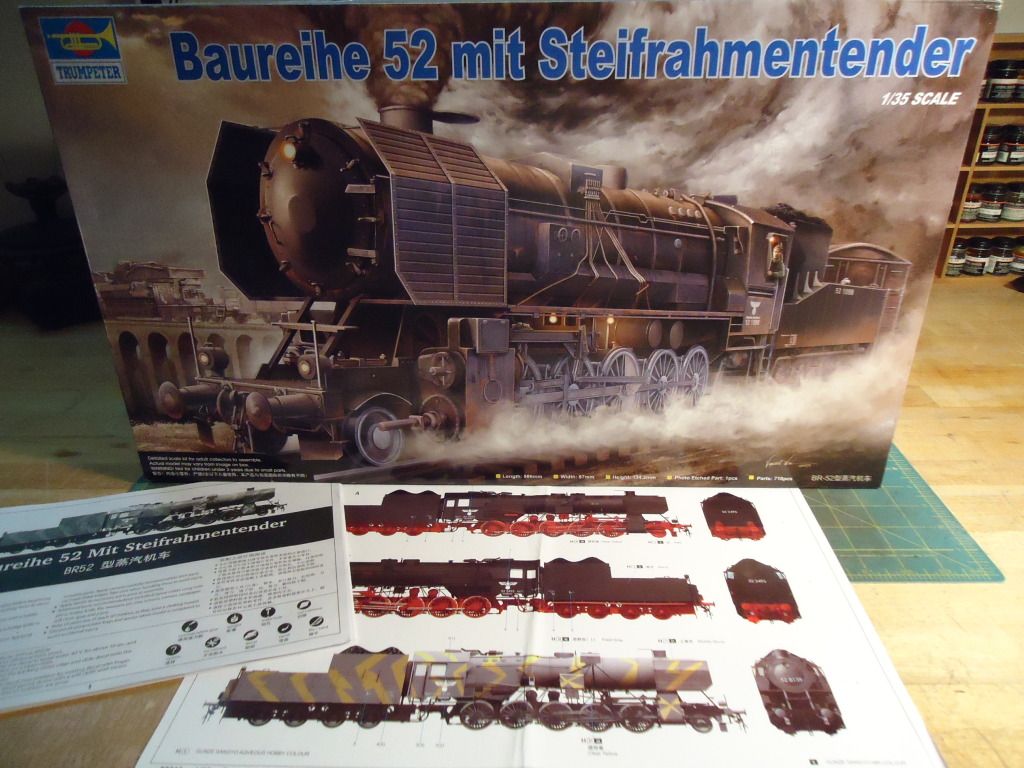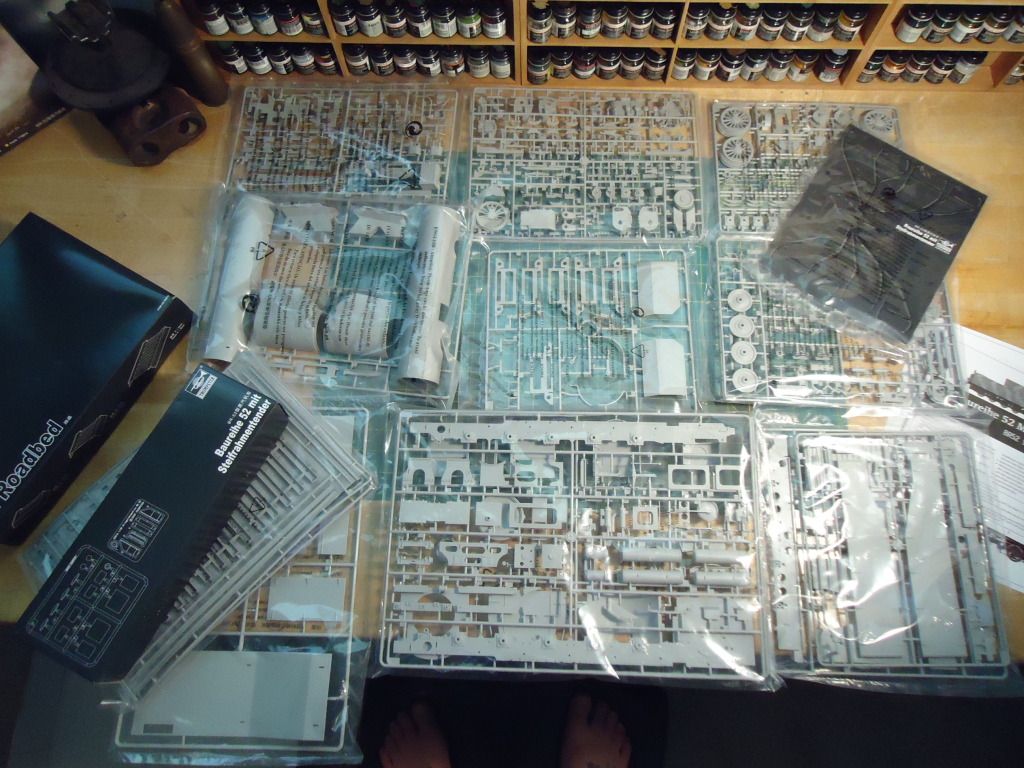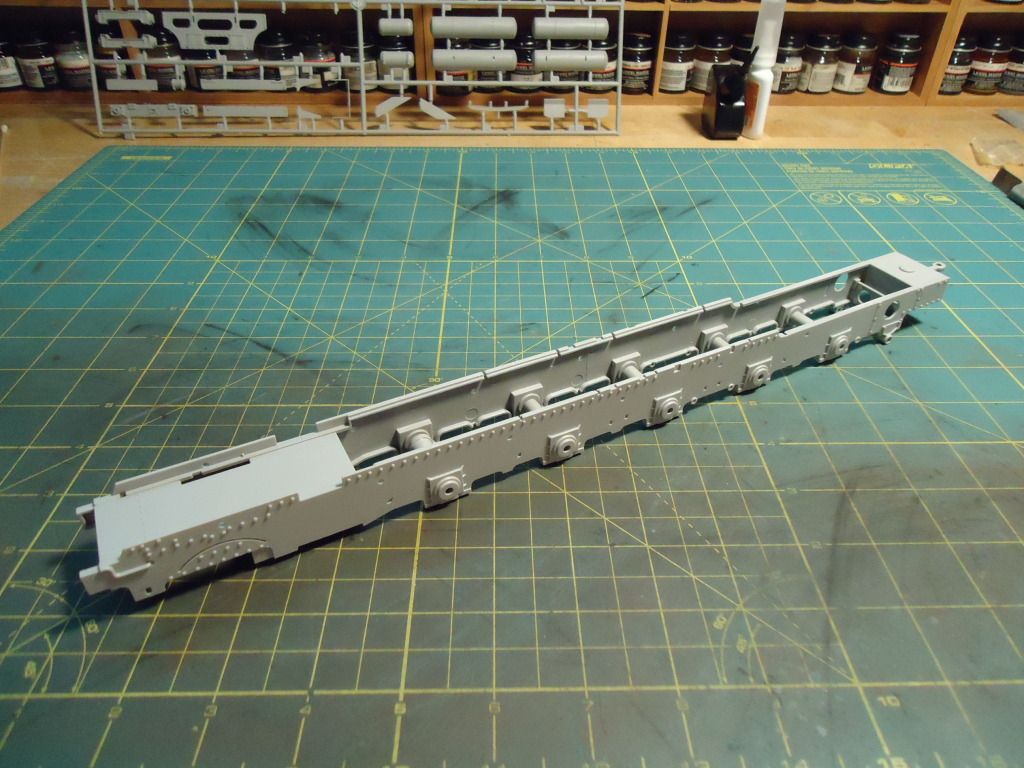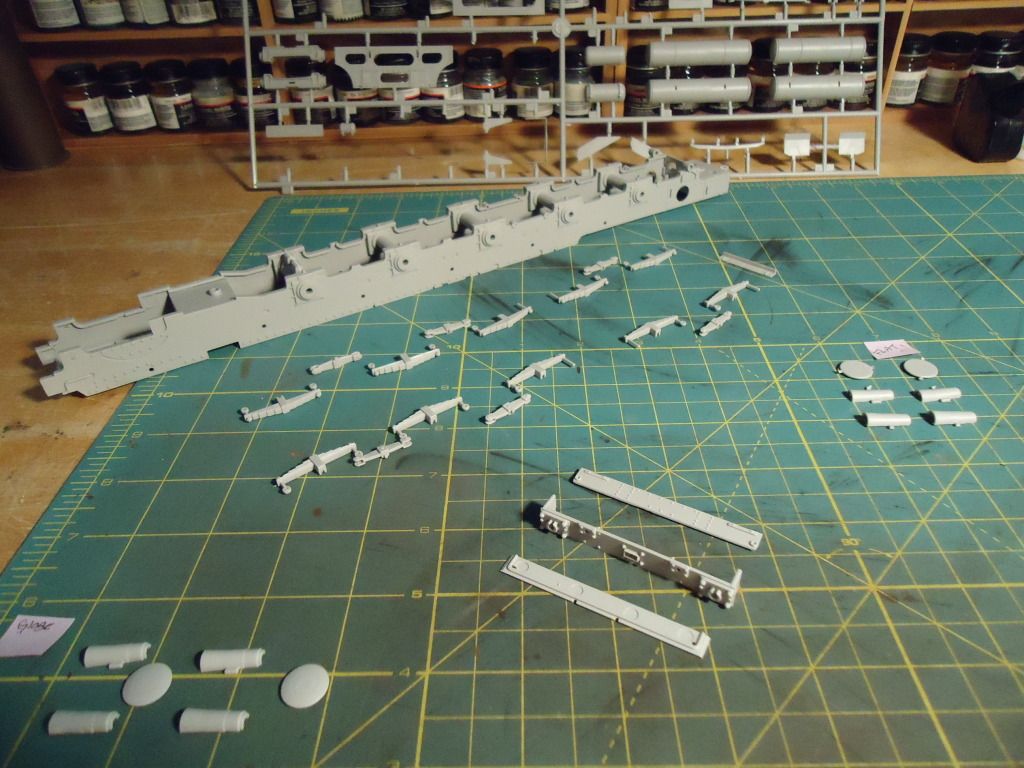OK guys, this is the first build in the new house. It will take more time for me then usual to finish this due to a new work schedule and the lack of a spray booth, the old booth did not make the move. Will be skipping around building this in several assemblies allowing me time to set up a new booth. So here we go........
Baureihe 52 mit Steifrahmentender, BR 52
Due to available man hours and a needed adaptation to war-time shortages, new war locomotives (Kriegslokomotives) were developed. Both the BR44 and BR50 class locomotives were simplified. The lightweight BR52, locomotive No. 52001 left the workshops of Borsig in Berlin on September 12, 1942.
The BR52 was a radically simplified version of the pre-war Reichsbahn BR50 locomotive (produced 1938-1942). The BR50 consisted of around 6,000 parts, the BR52 only 5,000 parts, of which about 3,000 were simplified. The manufacturing time for each machine was reduced by 6,000 hours. Building the economic BR52 made a saving of around 12 tons of steel and 30% of work time in relation to the BR50. These machines became, with an axle load of 15 tonnes and a maximum speed of 80 km/h (44 mph) forwards or backwards, as good as the Class BR 50.
Quick Notes:
**Between 1942 and the end of the war in May 1945 over 6300 BR52 locomotives were built.
**Locomotives of the 52 class are commonly referred to as "Kriegslok" meaning "Wartime".
**BR - German Class type - the technical group of similar structures that are available in different sizes.
**DR - East Germany Class type.
**Baureihe 52 mit Steifrahmentender - Series 52 with rigid frame border.
Builders: Berliner Maschinenfabrik and Henschel
Year Built: 1942
Works Number: 12226
Weight in Working Order: 149.7 tonnes
Length Over Body: 22975 mm (75 feet, 4 inches)
Maximum Speed: 80 km/h (44 mph)
Boiler Pressure: 16 bar (240 psi)
Power: 1620 CV
Driving Wheel Diameter: 1400 mm
Fuel Capacity: Coal - 10 tonnes
Water - 26 m3 (5,715 gallons)


Some of the parts. Have found that the majority of the parts, even though well detailed, have an off set mold seam and will require much clean-up to correct further increasing the build time.
Step 1 was straight forward and went together well making the basis of the frame.

Step 2 will be adding the suspension. Clean-up of pats is almost complete and assembly is soon to follow.

That's it for now. Thanks for stoping in.